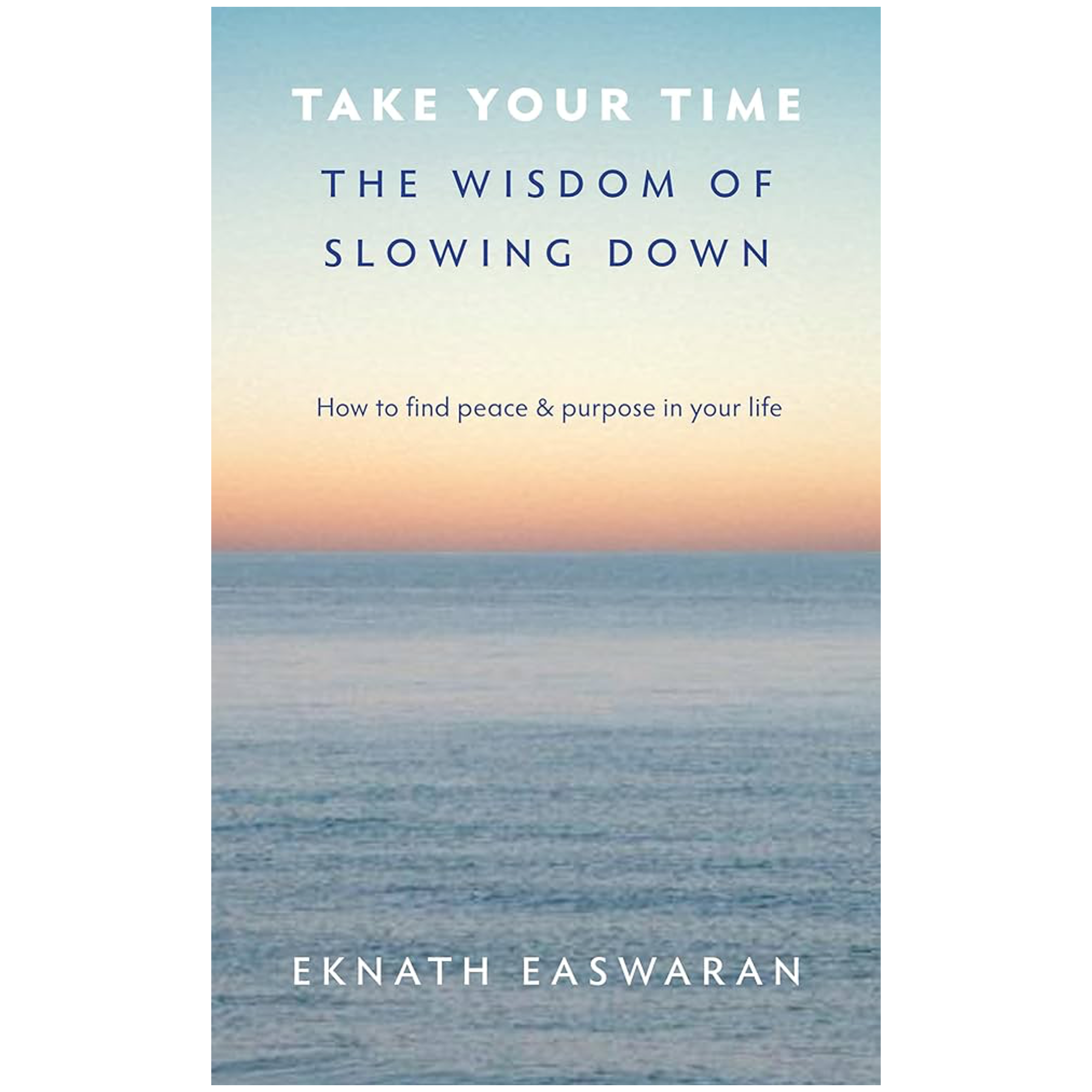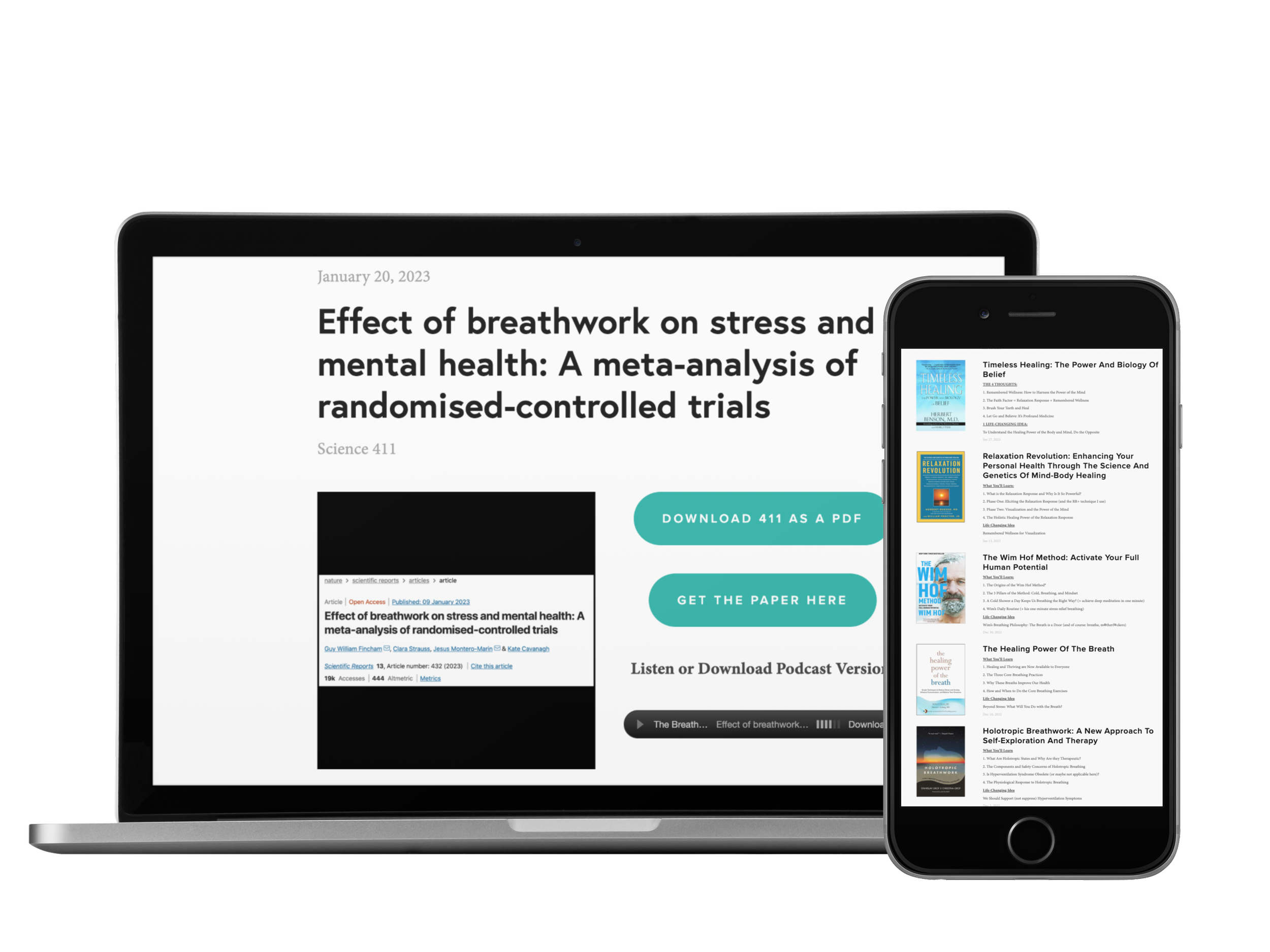Reading Time: 1 min 53 sec
I hope the next 23’ish breaths are the most nourishing of your day.
4 THOUGHTS
1. How Slow Breathing Helps the Body Thrive
“The practices of slow breathing and relaxation benefit the heart and respiratory system in many ways. The baroreceptors become more responsive to changes in blood pressure, the heart rate becomes more lively and elastic, the vagus nerve more reactive, and the autonomic nervous system shifts away from fight and flight toward less stress—which supports social interaction and enables the body to thrive.”
- Patrick McKeown, The Breathing Cure
Just an excellent overview of the benefits of slow breathing and relaxation for enhancing overall physical and mental health 👏
2. How to Get the Most Benefits for Body & Mind
Three quotes to ponder:
“The mind and body will always restore balance and harmony naturally when we get out of the way.” - Joseph Nguyen
“Interestingly enough, it is just when we forget about the body that it functions at its best.” - Eknath Easwaran
“In learning breath practices the most important thing to remember is to relax…Self-judgment adds another layer of stress. The less you judge yourself, the easier it will be to relax and experience the benefits.” - Richard Brown, MD, and Patricia Gerbarg, MD
3. Joy is Our Gravity
“Joy is our gravity. No one has to tell us to concentrate on something we like. We don’t worry about whether our mind wanders. Sure, it does occasionally, but it keeps coming back, pulled by the power of attraction, of enjoyment, of joy.”
- Dean Sluyter, Natural Meditation
When it comes to attention, “Joy is our gravity.” That’s a perfect reminder to ensure we’re setting up our breath or meditation practice to be enjoyable—whatever that means for you. When it’s fun & delightful, we’ll keep coming back, pulled by its inherent gravity.
4. Making Our Life into a Meditation
“Making one’s life into a meditation is different from using meditation to escape from life…If the temporary dissolution of self were all that was needed, problems would not be so tenacious. Even watching television would be therapeutic.”
– Mark Epstein, MD, Advice Not Given
That reminded me of this equally inspiring gem from Eknath Easwaran: “So try to remember every day that you are participating in meditation even at breakfast, at work, at school, in the garden, everywhere.”
1 Quote
“The breath is deeply connected to our neurological functioning and thus to our states of consciousness.””
1 GOOD BOOK
Take Your Time by Eknath Easwaran
This is one of the first books I read by Easwaran, and the one that immediately made him my favorite teacher (I’ve now read 10 of his books!). It’s so good. If you’re like me and always rushing, always “ready for the next thing,” I highly recommend it.
In good breath,
Nick Heath, T1D, PhD
“Breathing is the compound interest of health & wellness.”
Enjoy these posts? Donate to say thanks!
P.S. the 6 means 30
Get One of My New Digital Guidebooks
The Breathing App for Diabetes
This is the first program specifically made for people with diabetes to help manage their stress through breathing and mindfulness practices. In addition to the amazing program inside the app, we have some really neat things coming up, so sign up now!
Amazon Associate Disclosure
I’ve been recommending books for almost 6 years. Yet somehow, I just discovered that I could be an Amazon affiliate [face-palm]. In any case better late than never. Now, any Amazon link you click is an affiliate link. As an Amazon Associate, I earn from qualifying purchases. So, if you’d like to support my work, buying books through these links is helpful : )
* An asterisk by a quote indicates that I listened to this book on Audible. Therefore, the quotation might not be correct, but is my best attempt at reproducing the punctuation based on the narrator’s pace, tone, and pauses.






